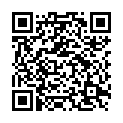|
|
|
| Module code: MAB_19_A_1.01.MDM |
|
|
2SU+1U+1P (4 hours per week) |
|
5 |
| Semester: 1 |
| Mandatory course: yes |
Language of instruction:
German |
Assessment:
Written exam 120 min. + practical exam with paper + lab experiment
[updated 29.08.2025]
|
MAB_19_A_1.01.MDM (P241-0269, P241-0270) Mechanical and Process Engineering, Bachelor, ASPO 01.10.2019
, semester 1, mandatory course
|
60 class hours (= 45 clock hours) over a 15-week period.
The total student study time is 150 hours (equivalent to 5 ECTS credits).
There are therefore 105 hours available for class preparation and follow-up work and exam preparation.
|
Recommended prerequisites (modules):
None.
|
Recommended as prerequisite for:
MAB_19_M_3.05.MK1 Machine Elements and Design 1
MAB_19_M_4.03.MK2
MAB_19_M_4.04.MK2 Engineering Design (with Project)
[updated 13.07.2025]
|
Module coordinator:
Prof. Dr. Bernd Heidemann |
Lecturer:
M.Eng. Oliver Müller
[updated 13.07.2025]
|
Learning outcomes:
After successfully completing this course, students will be familiar with techniques, standards and terms for the graphical representation of mechanical engineering components and structures.
They will be able to draw and dimension individual components and assemblies by hand according to standards.
Students will be able to transform spatial concepts into two-dimensional (component) views.
They will be able to read more complex assembly drawings.
Student will be able to disassemble a simple machine system in an organized manner, classify it in terms of system technology and explain the design of the components in terms of both function and production technology.
[updated 29.08.2025]
|
Module content:
Motivation:
Technical drawing as a means of communication (as a way to store and pass on technical information) in engineering practice.
The benefits of a hand drawing in engineering practice
Drawing everyday objects freehand
Projection drawing everyday objects by hand and using a ruler
Tasks and methods of descriptive geometry: Projection methods, “multiview projection”, “spatial thinking”
Standard-compliant representation (and reading) of individual technical (construction) components: Views, sections, breakouts
The technical designation of constructive details (chamfer, groove, recess, heel, etc.)
Standard-compliant dimensioning of components in technical drawings: component dimensions and dimensional tolerances, ISO tolerance system Production, test or function-oriented dimensioning Form and position tolerances, tolerance principles, surface specifications
Standard-compliant display of individual machine and standard elements: Threads, gears, pins, bolts, axles, shafts, welding seams or connections.
Standard-compliant display of assemblies: Views, sections
The structure of a technical drawing: Sheet division, title block, scale, differences between individual part and assembly drawing, parts list.
Standard-compliant dimensioning of components in technical drawings: component dimensions and dimensional tolerances, ISO tolerance system Production, test or function-oriented dimensioning Form and position tolerances, tolerance principles, surface specifications
Machine lab:
Diassembling and classifying (smaller) machine systems (e.g. electric hand machine tools) with regards to system technology
Analyzing components in terms of function, geometry and production technology
Drawing and dimensioning components by hand
Developing and documenting assembly instructions
[updated 29.08.2025]
|
Teaching methods/Media:
Seminaristic instruction with integrated drawing exercises by hand with pencil on paper
Manual-haptic laboratory exercise to "grasp" and "understand" real components in the literal sense
[updated 05.11.2020]
|
Recommended or required reading:
Bayer, W.K.: Technische Kommunikation, Technisches Zeichnen. Verlag Dr.-Ing. Paul Christiani GmbH & Co. KG, Konstanz.
Fucke, R., Kirch, K., Nickel, H.: Darstellende Geometrie für Ingenieure. Methoden und Beispiele. Carl Hanser Verlag, München.
Gräfer, Horst: Technisches Zeichnen für Maschinenbauer. Fachbuchverlag Leipzig im Carl Hanser Verlag. München, 2017.
Hoenow, G., Meißner, T.: Entwerfen und Gestalten im Maschinenbau. Bauteile – Baugruppen – Maschinen. Carl Hanser Verlag, München.
Hoischen, H., Hesser, W.: Technisches Zeichnen. Grundlagen, Normen, Beispiele, Darstellende Geometrie. Cornelsen Verlag Scriptor GmbH & Co. KG, Berlin.
Jorden, W.: Form- und Lagetoleranzen. Carl Hanser Verlag, München.
Kurz, U.: Wittel, H.: Böttcher/Forberg Technisches Zeichnen. Grundlagen, Normung, Darstellendes Geometrie und Übungen. Vieweg + Teubner Verlag, Wiesbaden.
Muhs, D., e.a.: Roloff/Matek Maschinenelemente. Normung, Berechnung, Gestaltung. Vieweg + Teubner Verlag, Wiesbaden.
Muhs, D., e.a.: Roloff/Matek Maschinenelemente. Tabellen. Vieweg + Teubner Verlag, Wiesbaden.
Trumpold, H., Beck, Ch., Richter, G.: Toleranzsysteme und Toleranzdesign – Qualität im Austauschbau. Carl Hanser Verlag, München Wien.
[updated 29.08.2025]
|

